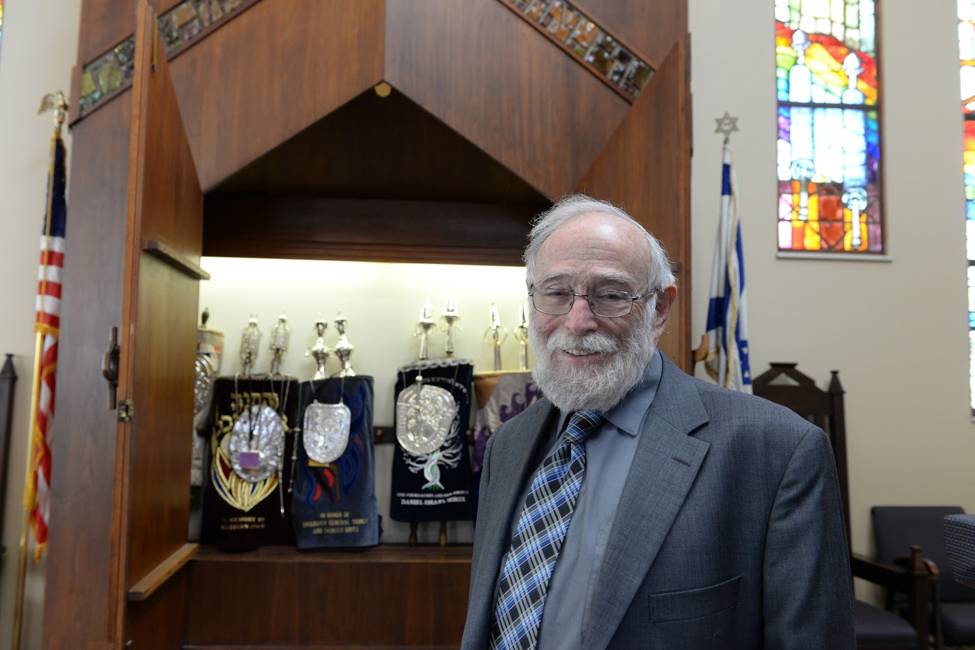
Peak Curiosity is a new, community-driven reporting series from 91.5 KRCC. We ask listeners to submit their questions about the Pikes Peak region and Southern Colorado, and then we answer them. Scroll down to the bottom of this post to submit your question!
For this installment of Peak Curiosity, we set out to answer a question from a resident of Pueblo, CO:

"I read that Pueblo's Temple Emanuel on Grand Ave. was founded in 1900. Tell us about the Jewish history of this region."
The story starts as you might expect.
Anti-Semitism was rampant in Europe in the mid-1800s, and there was economic opportunity in the United States. Two German Jewish brothers, Abe and Henry Goldsmith, were among those who sought a better life in the US. They settled in Denver to farm. Henry married a Jewish woman named Clara, and together they had a daughter, also Clara.
“She was born in 1860, and she was the first Jewish girl born in Denver,” says Thyria Wilson, an archivist at the Rocky Mountain Jewish Historical Society in Denver. She says this Jewish birth is the first documented in Colorado.
Wilson says the Goldsmiths did not do well in Denver. Baby Clara’s mother died during childbirth. A flood ruined the family’s harvest. So the remaining family turned south to Pueblo to open a store. But life was tough there too. In Pueblo, Clara was captured by Ute Indians and ransomed back to the family. They got her back, Wilson says, for “a bolt of calico, flour, and, of all things, pork rinds.”

The Goldsmiths were part of the first wave of German Jewish Immigrants to settle in Southern Colorado beginning in the 1860s. By 1877 there were 400 Jewish families in Colorado, three-quarters concentrated in Denver and the rest spread throughout the state. Many opened stores in mining towns - selling food and general goods to the miners.
According to Wilson, “Some built businesses, not so much farming, but ranching. We did have Jewish cowboys in the early days.”
In the early 1900s a second wave arrived.
“They were Eastern European, and were more religious, and the groups kind of separated some,” Wilson explains.

Synagogues in the south came drip by drip, as they were supported by a small, but active, number of Jews. In 1905 the Jewish population in Colorado Springs was about 75 and Pueblo about 300. Resources were thin, so rabbis came from Denver. People traveled from New Mexico up to places like Temple Aaron in Trinidad. It was a regional effort to keep the temples open.
Dr. Perry Bach is a member at Temple Shalom, one of three synagogues in Colorado Springs. He’s currently working on a book about the history of Jews in Colorado Springs. He’s also a child psychiatrist. He says in the early 1900s, many Jews came to Colorado to escape overcrowding on the East Coast.
“In fact so many of them settled in New York and Brooklyn that a group of them decided ‘Why don’t we arrange for many of the immigrants to move farther West,’” Bach says.
Like many other Colorado transplants, Jewish immigrants also came to seek treatment for tuberculosis with dry weather and clean air. They were treated throughout Colorado, including at the renowned Cragmor Sanatorium in Colorado Springs.
Some, Like Dr. Otto Einstein, even worked at the sanatoriums. Einstein fled Nazi Germany in 1939 with the help of his very famous 4th cousin, Albert. Dr. Otto Einstein called Colorado Springs home for a few decades.

Tanja Britton is a native German, and resident of Colorado Springs. She says she fell in love with the story of Dr. Einstein because it was like her own story.
“He was German, I was born in Germany, He was a medical man and at some point I was a medical woman,” Britton says.
In Germany, Dr. Einstein was a pediatrician, but he reinvented himself as a tuberculosis expert in Colorado Springs, says Britton. Einstein was revered at Cragmor as a kind doctor who bridged cultural barriers by treating Navajo patients.
Imagine, Britton says, “a German physician with a heavy accent who treated Navajo patients with accented English who also had very very different backgrounds.”

Colorado Springs is now home to the second largest Jewish population of in the state. Bach estimates there are around 400 families involved in the Jewish community, and about 4,000 ethnic Jews in the area. I asked him why it’s important to remember the history of Jewish people in this region.
Dr. Bach says children who know their family history, "have a better sense of identity and don’t feel as if they just ended up here.”
And with only a handful of third-generation Jews left in Colorado Springs, there aren’t many who can tell that original story.








